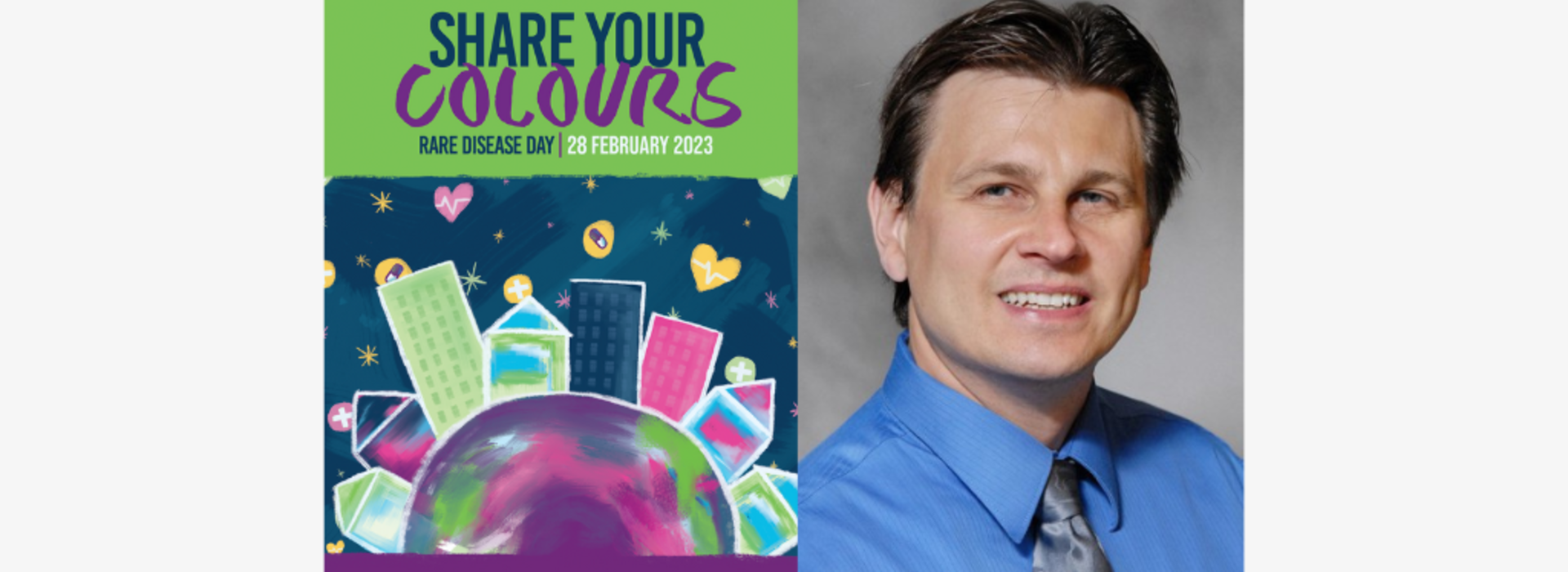
Talking rare diseases with U of M
MINNEAPOLIS/ST. PAUL (02/21/2023) — Each year on February 28, Rare Disease Day is observed across the world to raise awareness for quality healthcare, equitable social opportunities and access to diagnosis for those with rare diseases. The day aims to generate discussion for people affected by rare diseases as well as the healthcare systems that serve them, advocating for change and awareness for all affected.
For Rare Disease Day 2023, University of Minnesota Medical School expert Troy Lund, MD, PhD, discusses rare diseases and the work he and the University do to progress the field.
Q: What is a rare disease?
Dr. Lund: The official definition of a rare disease used in the medical community is one that affects less than one in 200,000 individuals.
Q: What causes rare diseases, and when are they usually diagnosed?
Dr. Lund: They can be diagnosed anytime from the newborn period to adulthood. Historically, rare diseases have been diagnosed after symptoms of the disease have already started.
Some of the most frequent rare diseases that I see in my practice are adrenoleukodystrophy, a genetic neurological condition that affects the brain’s nerve cells; lysosomal storage disorders in which sugars in the body are not broken down correctly and cause abnormalities throughout the body; Sandhoff Disease, in which nerve cells in the brain and spinal cord progressively degrade; Tay-Sachs disease, in which a mutated enzyme causes damage to the brain and spinal cord; and various childhood cancers. Causes vary, but many of those listed are genetic and can run in families.
Q: How many rare diseases have treatments?
Dr. Lund: This is a hard question to answer because there are so many rare diseases. Diseases like childhood cancers can have multiple treatments available, but some rare diseases have no treatment, such as Sandhoff's Disease. Instead, families work with their specialized physicians and care teams to approach each case individually and seek access to academic clinical trials from private companies or the National Institutes of Health.
Q: Why are treatments for rare diseases hard to come by and how can the public support funding scientific advancements in this space?
Dr. Lund: Treating rare diseases is difficult for many reasons. One, given their rarity, it is often hard to understand the biology behind rare diseases, as there are so few individuals to learn from. Two, it's hard to get biotech investment in rare diseases because it's difficult and expensive to get a therapy to market and keep it viable.
For these reasons, public support is invaluable to learn biology, make discoveries and develop medicines for rare diseases that allow us to help individuals with rare diseases and improve their quality of life.
Q: What work is being done at U of M to develop treatments for rare diseases?
Dr. Lund: The work at the U of M in rare diseases is unparalleled in its breadth and depth. We work on everything from first-in-human studies and clinical trials to biomarker discovery of predictors for outcomes from gene therapy in rare diseases. Finally, laboratory-based research discovers the basic biological processes involved in rare diseases. Our goal is ultimately to improve the quality of life for those with rare diseases, especially children — that’s where we focus our energy every day.
Troy Lund is an associate professor at the University of Minnesota Medical School. He is also a faculty member in the Division of Pediatric Blood and Marrow Transplantation & Cellular Therapy. Dr. Lund is interested in the use of hematopoietic stem cell transplantation (HSCT) primarily for patients with inherited metabolic disorders, like Adrenoleukodystrophy (ALD), Hurler syndrome (MPS-1H), Hunter syndrome, Metachromatic Leukodystrophy and others. He studies disease onset, disease biomarkers, disease mechanism and how HSCT improves the disease process. His work, both in his research laboratory and with his patients, has created many new treatment approaches, ultimately making HSCT safer and more effective.
-30-
About “Talking...with U of M”
“Talking...with U of M” is a resource whereby University of Minnesota faculty answer questions on current and other topics of general interest. Feel free to republish this content. If you would like to schedule an interview with the faculty member or have topics you’d like the University of Minnesota to explore for future “Talking...with U of M,” please contact University of Minnesota Public Relations at unews@umn.edu.
About the University of Minnesota Medical School
The University of Minnesota Medical School is at the forefront of learning and discovery, transforming medical care and educating the next generation of physicians. Our graduates and faculty produce high-impact biomedical research and advance the practice of medicine. We acknowledge that the U of M Medical School, both the Twin Cities campus and Duluth campus, is located on traditional, ancestral and contemporary lands of the Dakota and the Ojibwe, and scores of other Indigenous people, and we affirm our commitment to tribal communities and their sovereignty as we seek to improve and strengthen our relations with tribal nations. For more information about the U of M Medical School, please visit med.umn.edu.